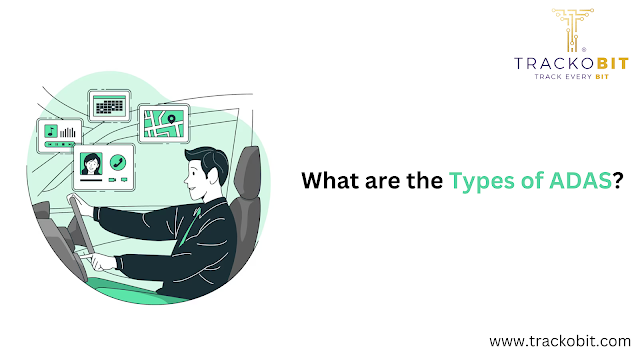What are the Different Types and Benefits of ADAS Software?
Advanced Driver Assistance Software, also known as ADAS, has been designed to enhance vehicle safety and the overall driving experience. ADAS employs advanced technologies to provide an automated response, which, in return, ensures safety and better control when you’re on the move. Implementing this software into fleet management has various long-term benefits that we’ll dive into. But before doing so, let’s understand the types of ADAS.
Types of ADAS Software
ADAS systems serve as the backbone for most of the modern vehicles that make up fleet management software. Let’s focus on the types and features ADAS offers.
1. Adaptive Systems
Adaptive systems can adjust under different driving conditions. A key component here is the Adaptive Cruise Control (ACC), which not only maintains a set speed set by the driver but also automatically adjusts that speed based on the distance from the vehicle ahead. For instance, when a truck on a fleet equipped with ACC approaches a slower-moving vehicle, the Software automatically slows down the truck, maintaining a safe distance.
2. Automated Systems
Automated systems take over parts of the driving responsibilities. An example is Parking Assistance. It uses cameras and sensors around the vehicle to detect suitable parking spaces and guides or even steers the vehicle itself in parallel parking. Major transport companies have implemented AEB in their fleets to reduce the risk of accidents, particularly in congested city traffic or high-speed highway conditions.
3. Monitoring Systems
Monitoring systems under ADAS cover aspects like Lane Departure Warning (LDW) and Blind Spot Detection (BSD). The LDW automatically alerts the driver if their vehicle begins to move out of its lane unless a turn signal is in operation. In contrast, BSD helps drivers monitor the blind spots around the vehicle while changing lanes or parking. These Software are widely adopted in India by companies like Tata Motors in their fleet of commercial vehicles to ensure the safety of both the driver and the cargo.
4. Warning Systems
Warning systems under the umbrella of ADAS software include Forward Collision Warning (FCW) and Pedestrian Detection Software. FCW identifies an impending forward collision with another vehicle in its path and warns the driver to take preventive action. Pedestrian Detection Software, on the other hand, detects pedestrians in the proximity of the vehicle and alerts the driver. These Software are a boon for busy Indian roads, effectively in use in fleets owned by transportation and logistics companies like Delhivery and Blue Dart.
Major software such as TrackoBit offers driving monitoring software, especially, to monitor the driver’s attentiveness. If the driver appears to be drowsy or distracted, the Software will give a warning.
Benefits of Implementing an Advanced Driver Assistance System?
ADAS offers features that are designed to assist drivers in navigating their vehicles and improving road safety. Here’s why ADAS is proving a game-changer for the fleet industry:
- Provides Safety: The primary advantage of ADAS is the enhancement of road safety. They alert drivers to potential problems, mitigate the impact of crashes, and, in some cases, take over control of the vehicle to prevent an accident. It has automatic emergency braking, which helps drivers avoid collisions by applying the brakes automatically if the driver fails to respond to a detected obstacle.
- More Efficiency: This software can aid in better route planning by taking into consideration traffic conditions and helping to identify the fastest routes. For instance, Tesla’s ADAS, also known as Autopilot, uses advanced sensors and cameras to monitor the surrounding traffic and adjust the speed accordingly to ensure optimal fuel usage and timely delivery.
- Lower Insurance Premiums: With advanced safety features, insurance companies may offer lower premiums. Due to these features, a fleet equipped with ADAS is expected to have fewer accidents, which in turn translates into lower insurance costs. This could save a significant amount of money in the long run.
- Driver Monitoring: ADAS like adaptive cruise control and lane-keeping assist reduce driver workload and stress during long journeys or in heavy traffic. This could improve driver performance and ensure their well-being, thus reducing unexpected downtime or sickness absence.
- Vehicle Maintenance: Many ADAS come with predictive maintenance features that can identify potential vehicle issues before they cause a breakdown. For instance, with tire pressure monitoring, fleet managers can be alerted ahead of time to prevent costly tire blowouts.
- Speed Compliance: Speed limit recognition and intelligent speed adaptation functions ensure drivers adhere to speed limits. This not only improves safety but also ensures compliance with the law, thus enhancing brand reputation by avoiding fines and points on licenses.
Conclusion
With the help of ADAS, owning and operating a vehicle—whether a single car or an entire fleet—becomes easier, safer, and more convenient.
So, try TrackoBit’s ADAS systems which can contribute to higher safety standards, improved vehicle longevity, and reduced running costs – all leading to a more profitable and sustainable fleet management.
Read More: What is Advanced Driver Assistance System (ADAS)?


.png)

Comments
Post a Comment